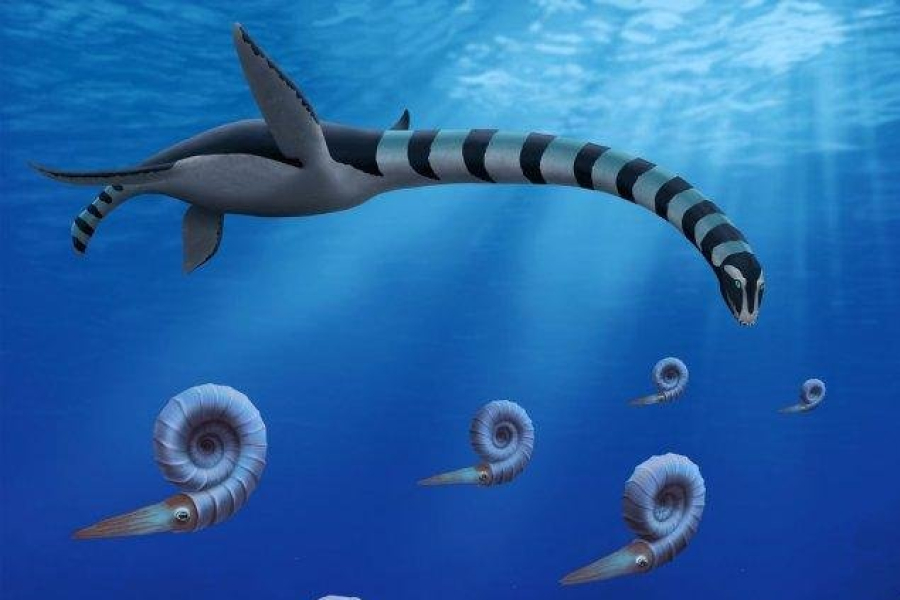
A group of Canadian fossils have been identified as a new genus of elasmosaurus, a “sea monster” that lived tens of millions of years ago, according to a newly published study.
In a study published today in the Journal of Systematic Paleontology, the newly described genus was given the formal name Traskasuara sandrae.
Elasmosaurs were large marine creatures with exceptionally long necks and snake-like heads, large jaws and sharp, long teeth designed to capture, crush and eat prey.
Trascasaurus had a combination of several “primitive and derived features” that set it apart from the elasmosaurs that lived about 85 million years ago.
Both of these creatures belong to the group of plesiosaurs, marine reptiles that appeared at the end of the Triassic period (about 215 million years ago) and became extinct at the end of the Cretaceous period (about 66 million years ago).
Unknown species of plesiosaur
“Plesiosaur fossils have been known in British Columbia for several decades,” said lead author F. Robin O'Keefe.
“However, the identity of the creature that left these fossils remained a mystery, even though they were designated as official [British Columbia] fossils in 2023.”
O'Keefe said today's research sheds light on the origins of these fossils.
“The scientific confusion surrounding this taxon is understandable,” O'Keefe added. “The shoulder… is unlike any other plesiosaurian creature I have ever observed.”
“The Pacific Northwest has finally found its own Mesozoic reptile,” says O'Keefe, an expert on prehistoric marine animals from the age of dinosaurs and a professor at Marshall University in West Virginia.
A strange and fascinating beast
“As surprising as it may seem, the region that is now famous for its rich marine life was home to some unusual and fascinating marine reptiles during the age of dinosaurs,” he added. “Traskasaurus is a strange, convergently evolved, fascinating creature.”
The unique combination of physical adaptations of the Trascasaurus made it a particularly effective hunter from above, and it was one of the first plesiosaurs to possess this ability.
Their necks reached nearly 40 feet in length, and their bodies resembled small whales, with front flippers that helped them move through the water.
The marine reptile's bone structure suggests it was particularly adept at diving to attack its prey from above, and its teeth were ideal for breaking ammonite shells, O'Keefe said.
The first fossil was discovered in 1988.
The first Trascasaurus fossil was found along the Puntledge River on Canada's Vancouver Island in 1988 and dates back to the late Cretaceous period.
Since then, other fossils have been discovered, and three specimens from the Haslam Formation on Vancouver Island are reviewed in a paper published in the latest issue of the journal Systematic Paleontology.
The finds were first reported in 2002 and have gained international fame in recent years after British Columbia authorities declared them the province's official fossil emblem.
Trascasaurus fossils are on display at the Courtenay Museum and Paleontology Centre in British Columbia.
Sourse: www.upi.com





